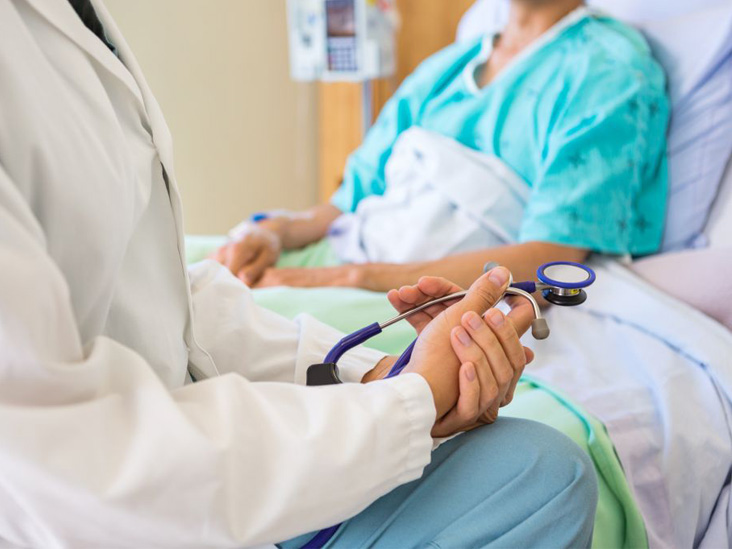Tips and precautions before angiography:
- Angiography and catheterization is only a diagnostic method, not a treatment, and while it gives complete information about your heart condition, it is considered a low-risk method.
- Angiography does not require anesthesia, it is performed with local anesthesia and without pain.
- If you have a history of drug or food allergy, inform the nurse and doctor, because necessary measures will be taken to prevent the occurrence of allergy.
- If you have a history of any disease such as: diabetes, hypertension, epilepsy, kidney and liver diseases, history of stroke, MS, etc., be sure to inform the doctor and nurse.
- Take a bath the night before angiography and clean the unwanted body hair from the navel area to the knees in both legs.
- When visiting, bring all medical documents such as ECG, chest X-ray, tests, ultrasound, exercise test and your medications.
- You must fast 6 hours before angiography. It is safe to take medicines with a little water.
- Angiography is performed in a special room equipped with an X-ray machine.
- Throughout the angiography, blood pressure and heart rate are monitored and their smallest changes are controlled.
- After acceptance and admission, the following transactions will be done for you:
- ECG recording
- Taking a chest photo if requested by the doctor
- Sugar test (FORBES) for diabetic patients, PT-IN test for patients with valve problems who take warfare, BUNKER test for all patients.
- A peripheral vein is taken to inject serum and medicine into it.
- The pulse of the leg is controlled by the nurse before and after angiography with the pulse behind the knee.
- According to the doctor’s order, the medicine is prescribed by injection or oral to relax and reduce anxiety and stress.
- Before going to the angiography room, the doctor will take a history from you.
- When going to the angiography room, remove any equipment, including dentures, undergarments, watches, shoulder pins, etc., and hand them over with you.
Notes during angiography:
In all stages of angiography, the doctor and nurse will be at your counter and the procedures will be performed for you:
- The catheter entry point, which is usually the groin, is washed with an antiseptic solution and is completely covered over your body.
- The doctor numbs the angiography site with local anesthetic and the corresponding catheter with an artery or vein.
- During the angiography, take a deep breath and then hold your breath when asked by the nurse or doctor. Next, you will be asked to cough three times in a row, one by one.
- This will make the quality of your angiography film more favorable and the pause and slowness of the heartbeat that occurs after the injection into the coronary artery will return to normal.
- After finishing the work, you will stay in the angiography room for about 15-20 minutes until your condition is controlled and stabilized.
- After controlling the bleeding, the dressing is done and the sand bag is placed on the catheter entry site. Avoid moving the leg, because vigorous movement will cause bleeding from the artery or vein.
Tips and care after angiography:
- During the transfer from the angiography bed to the stretcher and transfer from the stretcher to the ward bed, have the least movement so that the possibility of local bleeding is minimized.
- You must keep the operated position still, for this purpose, small bags containing sand are prepared and placed on it for 2 hours, so your cooperation is very important. 2 to 4 hours of immobility will tire you. In this case, under the supervision of the nurse, turn the shoulder area a little, place a small pillow on one of your sides.
- After angiography, you may feel increased or decreased heart rate, flushing, warmth and redness, nausea and vomiting, drowsiness, dizziness, sweating, lethargy, sudden weakness, etc., in these cases, inform the nurse and worry. Do not, because these side effects can be caused by the injection of drugs.
- If you feel heat, warmth and movement of liquid in the operation site, inform the nurse immediately, because the angiography site may have bleeding.
- Inform your doctor about any numbness, tingling, numbness, and sensation in the leg, and if pain, redness, swelling, and severe bruising occur at the catheter insertion site after angiography, inform your doctor.
- About 2 to 3 hours after angiography, avoid eating solid foods, then under the supervision of a nurse, start consuming liquids in small amounts, and if tolerated, in larger quantities, and then start consuming solid foods carefully.
- The vital signs of leg pulse and lack of bleeding are monitored regularly.
- The vital signs of leg pulse and lack of bleeding are monitored regularly.
- You are not allowed to get out of bed for at least 6 hours, so inform the department if you need to urinate.
- 8 to 10 hours after the operation, you will be able to get down slowly from the bed under the supervision of the nurse, for this purpose, get up slowly with the supervision and help of the nurse, first sit on the bed. Hang yourself from the edge of the bed and place your feet on the ground next to the bed in a sitting position, if your feet are far from the ground, ask for a footrest, then if you are not weak or dizzy, you can carefully and slowly get down from the bed. .Care after discharge:
- Most of the patients are discharged the morning after the angiography, and only the patients who need to continue their treatment need to stay in the hospital until the doctor makes a decision about their condition.
- At home, remove the bandage and take a bath, just wash the angiography site with lukewarm water slowly without massaging and check the site for hematoma (swelling and necrosis).
- In terms of activity, in the first one-two weeks, be careful and avoid doing activities of the elderly.
- Answer: Angiography and CD are usually given to you before discharge.
- Be sure to consult your doctor about the continuation of heart medications.
- Be diligent in maintaining and reporting CD-angiography.


